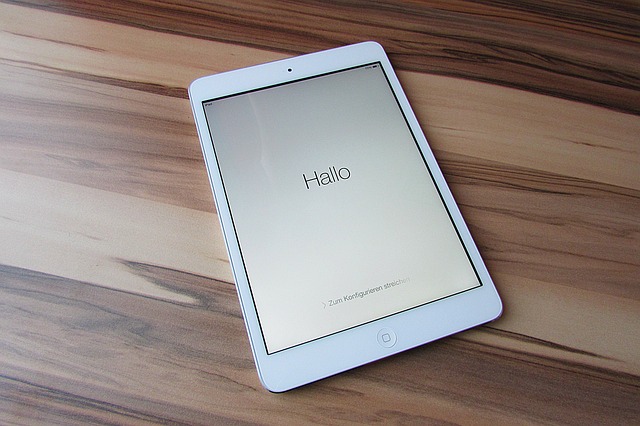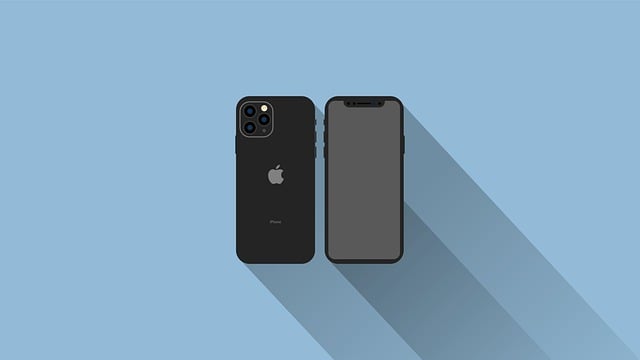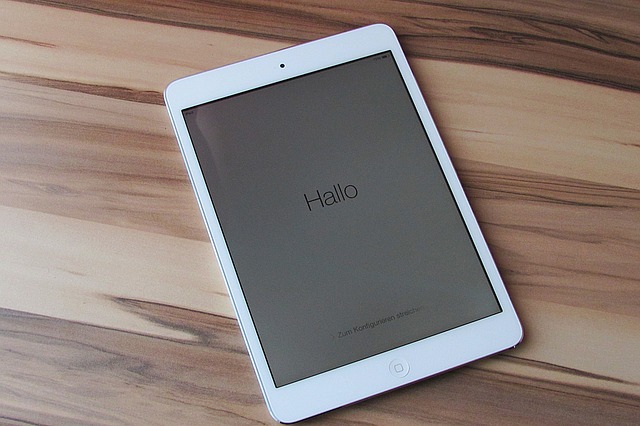If your iPad is showing signs of reduced battery life, such as frequent shutdowns or requiring charging more often than usual, it may be time to consider replacing its battery. Lithium-ion batteries naturally degrade over time due to regular use and charging cycles, which can lead to a noticeable decline in battery capacity and efficiency. Symptoms like rapid power drain between charges, an inability to maintain a charge as previously experienced, and physical swelling or bloating near the battery are indicative of a battery nearing the end of its service life. Replacing the iPad battery through professional service can significantly enhance device performance, extend its operational lifespan, and improve overall user experience by ensuring optimal charging and runtime. Regularly updating your iPad's software and monitoring high-energy application usage after replacement are recommended for maintaining optimal battery health. It's essential to address battery issues proactively to avoid more severe problems and ensure the iPad remains efficient and reliable for daily use. Replacing an iPad battery is a cost-effective solution to preserve device functionality and user satisfaction, making it an important consideration when experiencing performance issues.
When the once-reliable stamina of your iPad begins to wane, it may be time to consider replacing its power source. A device’s battery life is a clear indicator of its health and performance; if you’re noticing diminished battery capacity or frequent charging needs, it might be a sign that replacing your iPad battery is the best course of action. This article delves into the telltale signs that indicate your iPad’s battery requires attention, from unusual idle drain to swelling that could pose a safety risk. We’ll guide you through assessing your device’s condition and the importance of consulting with professionals for an accurate battery health evaluation. Learn how to keep your iPad running at its best by understanding when it’s time to replace your iPad battery.
- Recognizing the Signs: When to Replace Your iPad Battery
- Diminished Battery Life: A Sure Indicator for a New Power Source
- Unusual Battery Drain While Idle: Time for a Battery Replacement?
- Charging Frequently? Assess Your iPad's Battery Health
- Swelling or Bloating of the Device: A Danger Sign for Battery Replacement
- Sluggish Performance Under Load: Could Your iPad's Battery Be to Blame?
- Professional Help: Evaluating Your iPad's Battery with a Specialist
Recognizing the Signs: When to Replace Your iPad Battery

When your iPad’s performance starts to wane, it may be a clear indication that your device’s battery is nearing the end of its lifecycle. A noticeable decline in battery life between charges, with your iPad dying faster than usual or struggling to hold a charge at all, is one of the most definitive signs that it’s time to replace your iPad battery. This can manifest as having to frequently recharge your device during the day, or finding that it doesn’t last through a typical usage session as it once did. Additionally, if you notice your iPad shutting down unexpectedly when the battery percentage is still above the critical threshold, this is a strong signal that the battery’s capacity has significantly diminished. It’s advisable to address this issue promptly to maintain optimal performance and avoid potential damage to other components due to power fluctuations. Regular software updates can also impact your iPad’s battery life; ensure you keep your device updated as this can affect how long the battery lasts. If these issues resonate with your daily experience, it may be time to consider replacing your iPad battery with a new one to restore its efficiency and reliability.
Diminished Battery Life: A Sure Indicator for a New Power Source

When your iPad begins to struggle through the day on a single charge, a clear sign is flashing that it might be time to consider replacing its battery. Lithium-ion batteries have a finite lifespan; over time, they can hold less charge and may not perform as efficiently as when new. This diminished battery life can manifest in various ways: perhaps your device no longer makes it through your workday without reaching for a charger, or maybe you’ve noticed it shuts down earlier during your favorite app session. These are indicators that the battery’s capacity is waning and that a replacement might be in order to restore optimal performance. Regular use and charging cycles inevitably degrade the battery’s ability to hold a charge, leading to reduced runtime and potentially slower charging times. By opting for a professional service to replace your iPad battery, you can extend its lifespan and ensure that it operates at peak efficiency once again. This simple upgrade not only enhances user experience but also safeguards the longevity of your device.
Unusual Battery Drain While Idle: Time for a Battery Replacement?

When your iPad starts exhibiting an unusual pattern of battery drain, particularly when it’s idle, it may be a sign that your device’s power source is reaching the end of its lifespan. This phenomenon can indicate that the internal battery is no longer holding a charge as efficiently as it once did. Over time, lithium-ion batteries degrade and their capacity diminishes, leading to shorter usage times between charges. If you notice your iPad’s battery percentage dropping rapidly while it’s not actively in use, or if it’s consistently shutting down even with moderate usage, it might be time to consider a replacement. Opting for a professional service to replace the iPad battery can extend its usable lifespan and ensure that you have reliable device performance for everyday tasks and activities. Regularly updating your software and managing energy-consuming apps can also help in preserving the health of your new battery, thereby enhancing your overall user experience.
Charging Frequently? Assess Your iPad's Battery Health

When your iPad consistently requires frequent charging sessions, it might be a sign that its battery health is on the decline. Over time, lithium-ion batteries in devices like iPads gradually lose their capacity to hold a charge. This can manifest as a noticeable decrease in battery life between charges or an iPad that doesn’t hold a charge for as long as it used to. To proactively manage your device’s performance and longevity, it’s advisable to regularly check the battery health. Apple devices offer this feature, which provides a percentage indicating the maximum capacity of the battery compared to its original design capacity. If your iPad’s battery health reading is significantly below 100%, or if you notice that you’re charging your device more often than usual, it may be time to consider replacing the battery. A new battery can restore your iPad’s ability to last through your day without constant interruptions for charging. It’s a cost-effective solution compared to purchasing a new device and ensures that your current iPad continues to function efficiently for your daily needs.
Swelling or Bloating of the Device: A Danger Sign for Battery Replacement

When an iPad exhibits swelling or bloating around its battery compartment, it’s a clear indicator that the current power source has reached the end of its safe and effective lifecycle. This physical distortion is a direct consequence of the battery’s capacity to hold a charge diminishing over time due to chemical changes within the cells. The degradation can be attributed to various factors, including repeated charging cycles, extreme temperatures, or even manufacturing inconsistencies. As the battery struggles to meet the energy demands of the device, it may become unsafe and potentially pose a risk of leakage or overheating. Recognizing this sign is crucial for maintaining the longevity and performance of your iPad, making it imperative to consider replacing the ipad battery before the issue escalates. Regularly monitoring the physical condition of your device’s battery can help prevent more serious complications, ensuring that your iPad remains reliable and efficient for all your needs. If you notice any swelling or bulging near the battery area, it’s advisable to stop using the device immediately and seek professional assistance to replace the ipad battery safely.
Sluggish Performance Under Load: Could Your iPad's Battery Be to Blame?

If your iPad, once a swift respondent to your commands, now labors under the strain of intensive tasks or heavy app usage, it might be time to consider replacing its battery. Over time, lithium-ion batteries in devices like iPads degrade, leading to reduced capacity and slower performance when under load. This diminished performance isn’t solely due to the battery’s age but can also be influenced by extreme temperatures, software updates, and daily usage patterns. The battery’s health directly impacts your iPad’s ability to maintain optimal speed during high-demand activities such as video editing, gaming, or multitasking with numerous apps. If you notice that your device consistently slows down or shuts down unexpectedly when performing these tasks, it could be a clear sign that the battery’s capacity has dropped significantly and a replacement is in order. Replacing an iPad battery can rejuvenate its performance, ensuring that it returns to its former speedy self under load. This not only enhances your user experience but also extends the overall lifespan of your device, as the stress on other components is reduced when the battery functions at peak efficiency.
Professional Help: Evaluating Your iPad's Battery with a Specialist

When your iPad starts to power down unexpectedly or takes significantly longer to charge than it used to, it might be time to consider replacing its battery. Over time, lithium-ion batteries in electronic devices like iPads degrade and can no longer hold their charge as effectively as they once did. This diminished performance isn’t just an inconvenience; it can also affect the functionality of your device, leading to a less satisfactory user experience. To accurately assess the health of your iPad’s battery, consulting with a professional specialist is advisable. These experts can perform a detailed evaluation using specialized equipment to measure the battery’s capacity and determine if a replacement is warranted. This service not only ensures that you receive precise guidance but also guarantees that your iPad’s battery is safe and efficient, prolonging the lifespan of your device and maintaining its peak performance. Replacing an old or damaged battery with a new one can significantly revitalize your iPad, making it as good as new and ensuring that it operates smoothly for years to come.
In conclusion, maintaining optimal performance from your iPad hinges on the health of its power source. When faced with persistent signs like diminished battery life, frequent charging needs, or unusual drainage while inactive, it’s a clear indication that replacing your iPad battery may be necessary. If you notice your device becoming sluggish under heavy use, it could also point to battery-related issues. Ultimately, for precise evaluation and professional replacement of your iPad battery, consulting with a specialist is the best course of action to restore your device’s efficiency and longevity. Regularly replacing your iPad battery as needed ensures consistent peak performance and extends the lifespan of your cherished gadget.
